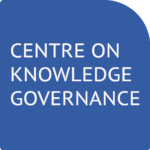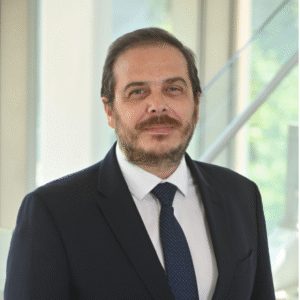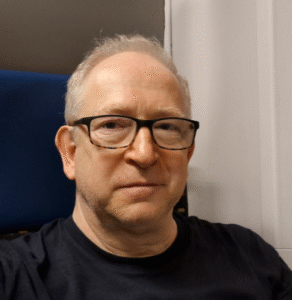Allan Rocha de Souza; Luca Schirru; Leon Queiroz Ramos In Brazil, 2024 has been quite eventful regarding copyright, with the debate seemingly returning to center stage. The Senate’s approval of Bill 2338/23 (AI Bill) and Bill 2331/22 (audiovisual quotas on video-on-demand services), along with the enactment of Law 14.852/24 (Videogames Act), are the three major developments. However, no progress was made on Bill 2630/20 in the Senate (the so-called “Fake News Bill”) or Bill 2730/19 (copyright reform Bill) in the House of Representatives. Unsurprisingly, the most attention-grabbing development, which sparked numerous discussions and seminars, was the approval of the AI Bill by the Senate on December 10, 2024. This was mainly due to the uncertainties and tensions surrounding Artificial Intelligence (AI) systems and the sensitive nature of the bill’s provisions on copyright. The Senate also approved Bill 2331/22, which introduces a fee for the commercial exploitation of audiovisual works in the digital environment—an initiative that is likely to impact user-generated content. Additionally, the Videogame Act (Law 14.852/24) was enacted, establishing a regulatory framework for video games in Brazil, including their normative classification as “interactive audiovisual works developed as computer programs.” AI and copyright The AI Bill (PL 2338/23), which establishes the regulatory framework for AI systems in Brazil, was approved by the Senate on December 10, 2024, and will now be reviewed by the House of Representatives. It is worth noting that the initial regulatory proposal was approved in the form of Bill 21-A/20 by the House of Representatives on September 29, 2021, but was later superseded by the Senate Bill. In its structure, logic, and overall approach, it mirrors the European AI Act, representing a clear example of the “Brussels Effect.” However, such mirroring may be excessive and should not overlook national particularities and specific challenges. The relationship between copyright and AI is complex and only gained national prominence in April 2024, when a dedicated chapter was incorporated into the Bill. As with any subject of this level of complexity and uncertainty (and all matters related to AI regulation fall into this category), there are always aspects that could and should be improved. These aspects were highlighted in the study “Artificial Intelligence and Copyright: Contributions to the Regulatory Debate in Brazil“ . Research in general—and text and data mining (TDM) in particular—received insufficient attention that is not able to ensure that research can continue without serious risks and costs, which could hinder this critical activity for the country. These regulatory oversteps include: (i) limiting research to institutional settings, (ii) prohibiting public-private research collaborations, and, most importantly, (iii) requiring that training data be “lawfully accessed,” a condition with significant implications. Without cutting-edge research, the country risks stagnation. Moreover, these provisions will impact all data-intensive research activities, across all sectors, regardless of whether they involve AI system development. The remuneration and licensing obligations established for training AI systems with copyrighted works, while reasonable in cases of commercial uses with substitutive effects, impose high entry costs on domestic companies. As a result, the primary beneficiaries will be large technology players and database holders (mainly major foreign corporations) that own sufficiently large collections of copyrighted works to serve as training datasets for AI systems. Consequently, this framework will undoubtedly hinder national innovation and the development of AI systems that would reflect Brazilian characteristics — all of that without effectively ensuring compensation for authors and artists, which was supposed to be its main justification! As approved by the Senate, these constraints on research and national innovation will impact virtually all economic, industrial, and public interest activities that rely on or require large volumes of information and data—whether for fundamental research or the development of AI systems tailored to national demands. This will also affect corporate customization and internal systems development, as copyright protection extends to text, sounds, and images. Consequently, any AI system that processes these types of content will be affected. Videogames Act Published on May 3, 2024, Law 14.582/2024 (officially ‘Legal Framework for the Video Game Industry’) establishes the Videogame Act, which regulates the “manufacturing, importation, commercialization, development, and commercial use of video games” in Brazil (Article 2). It does so by establishing guidelines and principles for their use (Article 6), as well as proposing measures for fostering investment and development in the sector (Article 4). Additionally, the law explicitly excludes games involving betting with prizes, random outcomes, commercial promotions, or lottery-based modalities (Article 5, sole paragraph). The legislation introduces concrete incentives for national video game production by recognizing the sector as part of the cultural industry (Article 12), making it eligible for tax benefits and public funding, similar to other cultural goods. Furthermore, classifying investments in video game development as “investments in research, development, innovation, and culture” (Article 11, sole paragraph) will likely increase the availability of resources and foster growth in the sector. An interesting aspect of the law is the facilitation of video games for educational and training purposes (Article 10), particularly through the development of public policies within the framework of the National Digital Education Policy and the creation of a repository for games developed with public funds. Equally relevant for research and development is the possibility of state support for research, development, and improvement of educational video games, including the creation of a dedicated platform for educational games (Article 13, §1, IV). However, all of these policies are optional rather than mandatory, as they arguably should be. One of the law’s key contributions is its definition of “video game,” which directly references copyright legislation. It classifies video games as “an interactive audiovisual work developed as a computer program” (Article 5.1) and links their protection to the Software Law (Law 9.609/98), which has distinct provisions compared to the general Copyright Law (Law 9.610/98). Although it does not directly address copyright, the law provides definitions for multiple roles that different professionals can assume in the creation and production of video games. These include potential authors, such as visual artists (Article 7, §3, I), audio designers for games (Article





